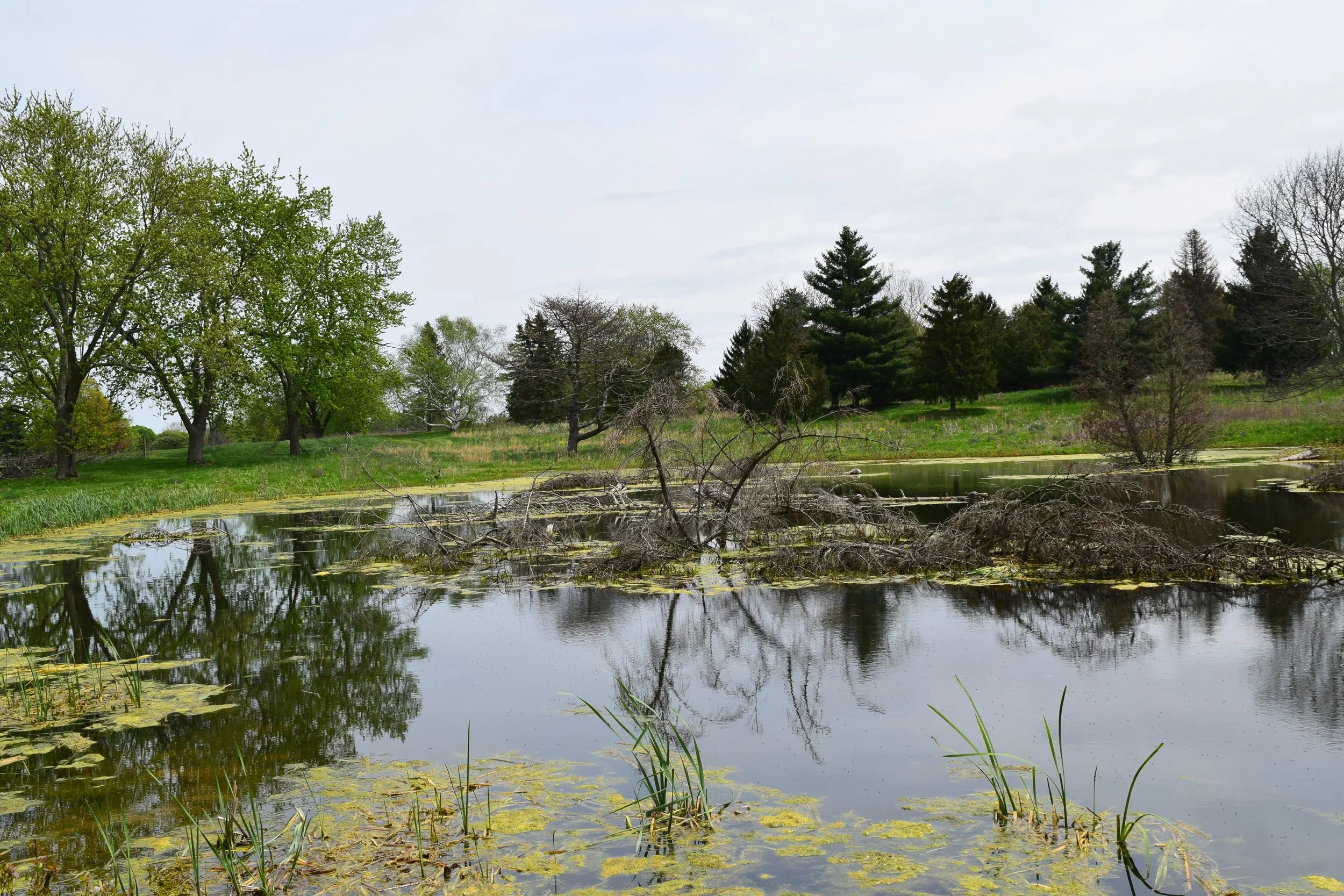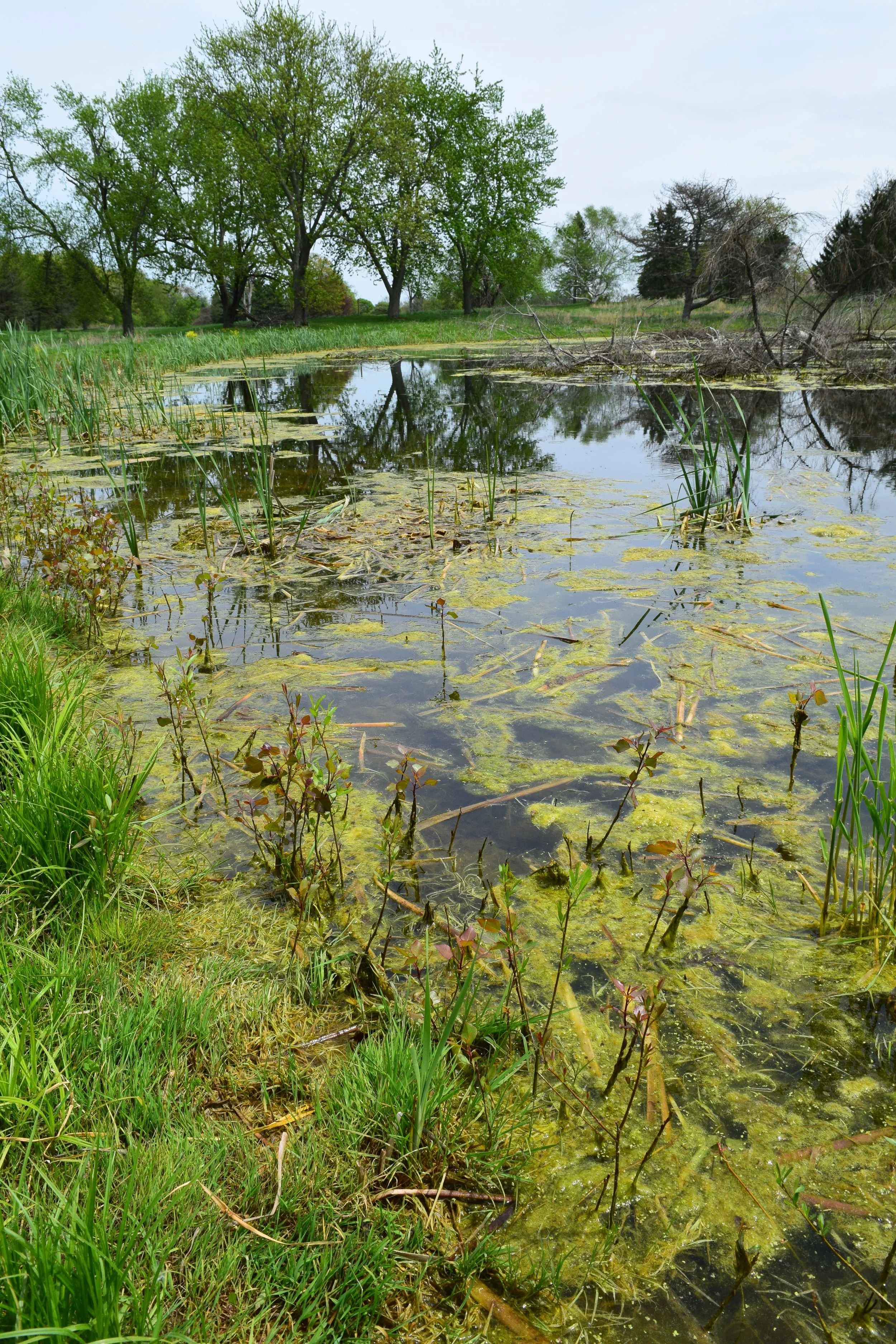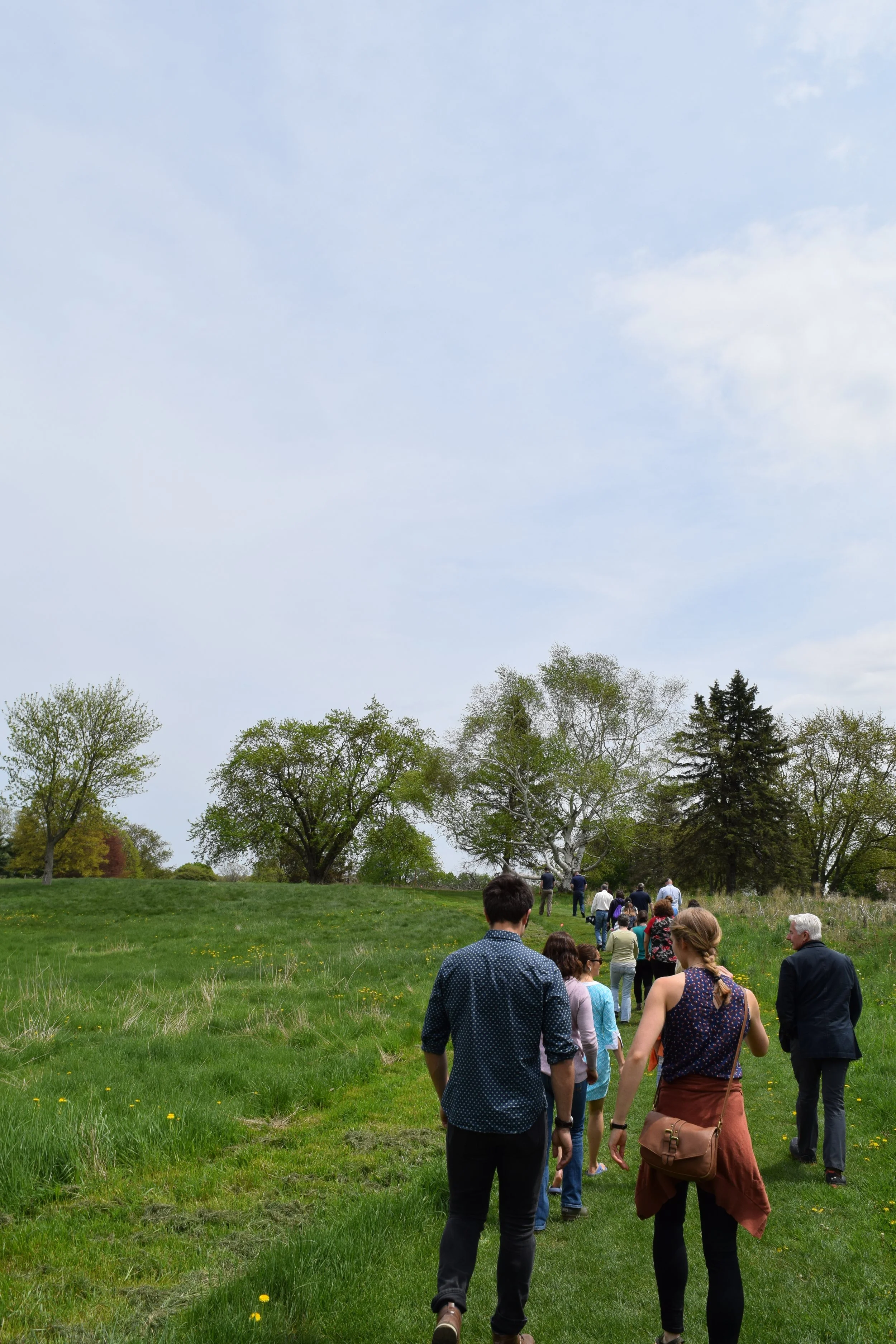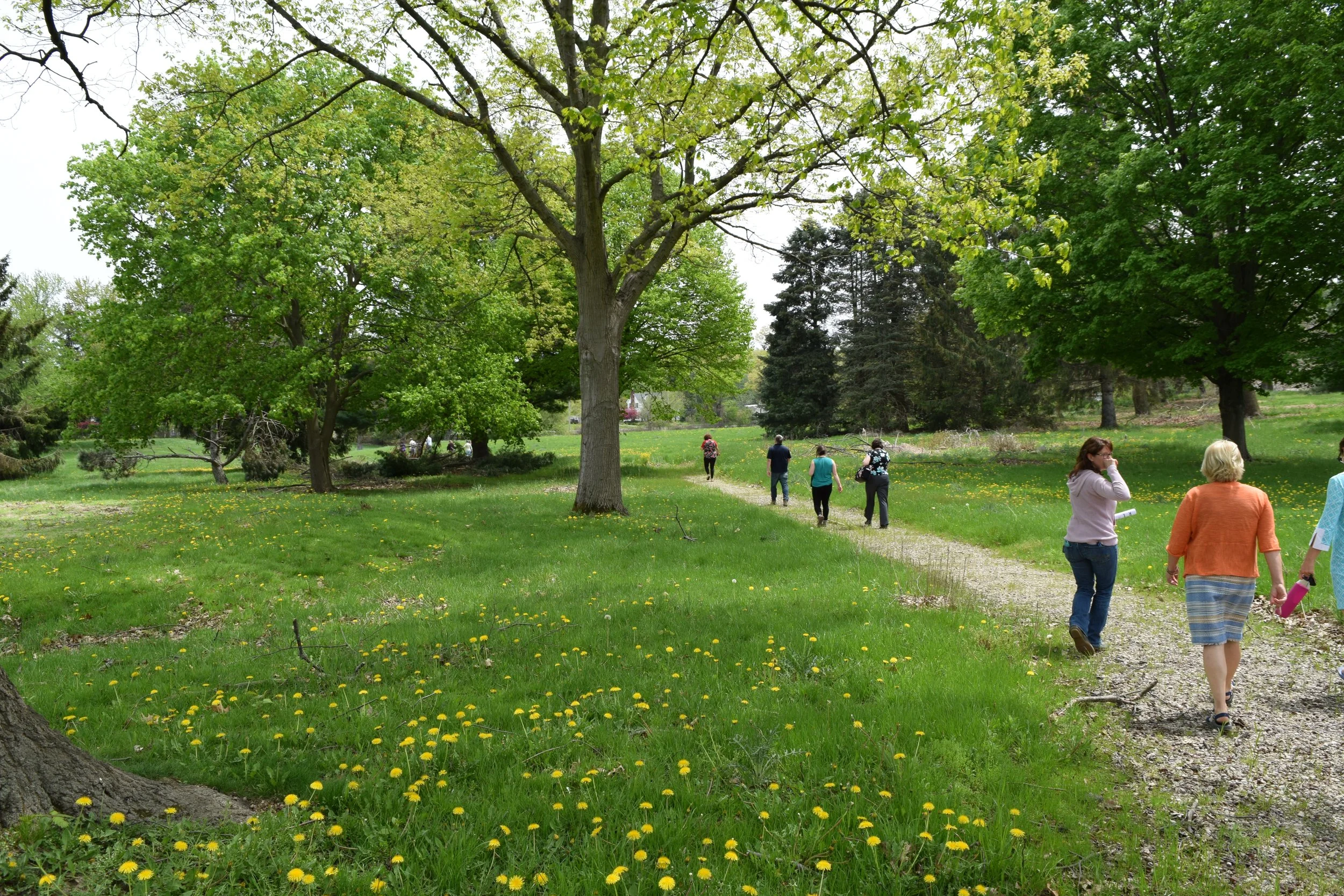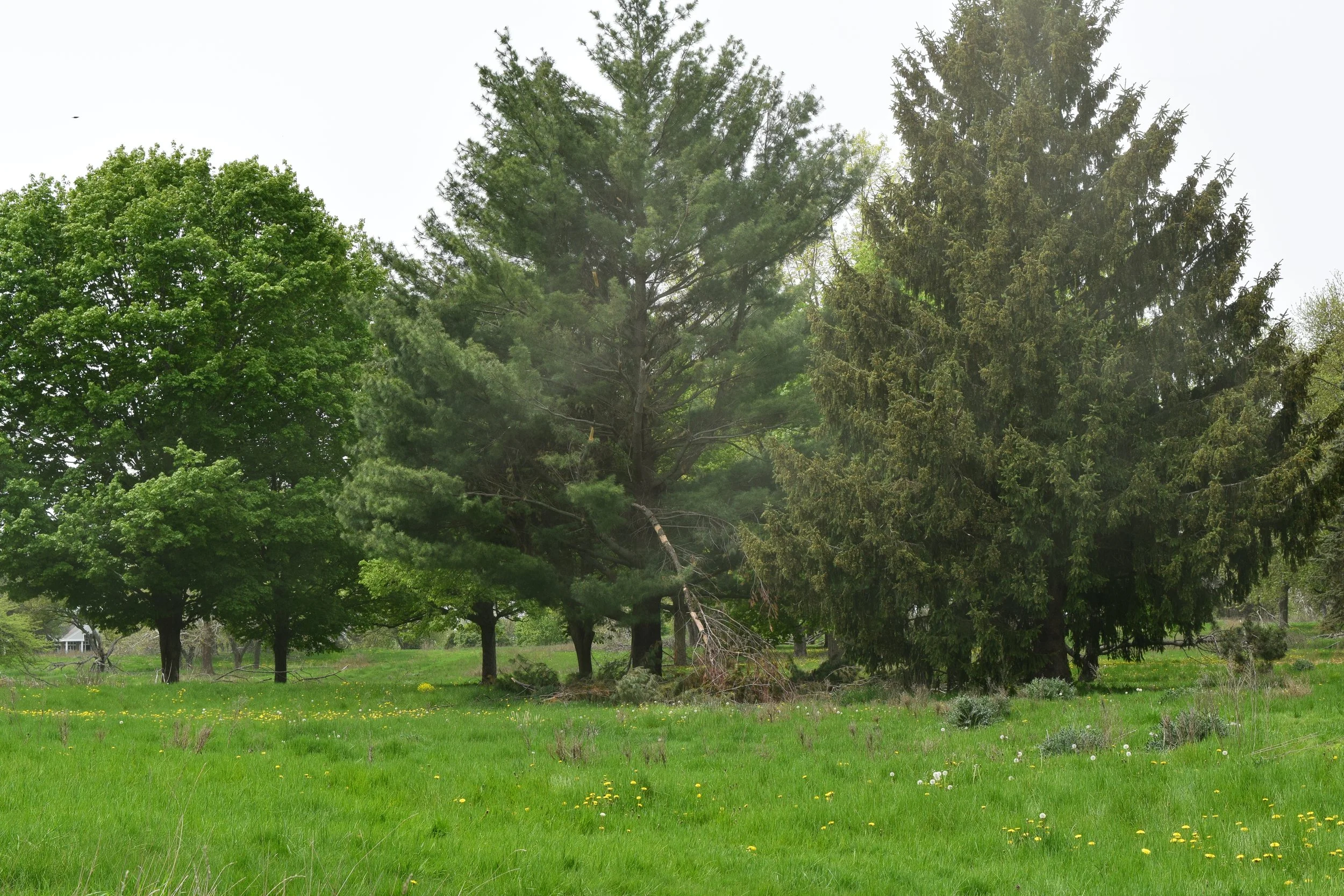GSI Story: Highlands Partnership Reclaims Golf Course for Nature
Blogpost originally published by the West Michigan Sustainable Business Forum.
The Blandford Nature Center operates out of a 143-acre non-profit land preserve in northwestern Grand Rapids that features a visitor center, a working farm and four miles of hiking trails. Long an advocate for environmental responsibility, Blandford thoughtfully incorporates sustainable practices into its operations and infrastructure.
The Highlands Golf Course had been a neighbor to Blandford for much of its history, but was slated to become a housing development in 2016 when Third Coast Development approached the nature center as part of its due diligence process. Upon learning about the potential value of the property to advance green infrastructure in the city, the development firm changed its mind and instead sold the 121-acre property to Blandford and the Land Conservancy of West Michigan.
Undoing a Century’s Worth of Golf Course
Redesigning a longstanding golf course as a more natural environment is no small task. Golf courses by their very nature require extensive grooming, including frequent mowing, weeding and fertilizing to promote the growth of specific grasses while eliminating others. Equally important, courses are designed to capture and quickly remove rainfall to maintain a particular aesthetic and minimize disruption to golf games. This differs significantly from natural landscapes, which support a variety of grasses, plants and trees and foster wetlands in low-lying areas.
Blandford and the Land Conservancy faced the daunting task of undoing more than a century’s worth of golf course grooming and infrastructure, including the annual application of fertilizer and other chemicals. The mission entailed much more than simply allowing the land to go fallow.
Investing in Green Stormwater Infrastructure
The Highlands restoration project has engaged volunteers in planting acres of native grasses and wildflowers along with hundreds of native and climate-resilient trees, fundamental changes designed to introduce a more sustainable infrastructure to the environment.
It will also “daylight” a stormwater drain that runs underground through a concrete pipe and diverts water off the property. The drain tiles are being removed and the structure rebuilt as an open-air stream. The more natural design will slow water flow, giving it time to filter out through the surrounding landscape while providing more natural habitat.
Plans to rework the stormwater management system at The Highlands initially raised a red flag among nearby homeowners concerned about possible flooding. By addressing the issue with the community directly, Blandford and the Land Conservancy have alleviated those apprehensions. Careful engineering ensures stormwater isn’t diverted into neighboring properties.
In addition to the extensive reshaping of the landscape, plans for The Highlands include constructing a “living” building designed with sustainability in mind. To meet the rigors of The Living Building Challenge, an international sustainable building certification program, the building must collect and treat its own water as well as generate its own energy and connect people to the environment. Blandford’s Mary Jane Dockeray Visitor Center already incorporates several of these attributes, most notably in its green roof.
The Results
Blandford’s efforts to restore and preserve The Highlands as a more natural environment will be an ongoing project. However, considerable progress already has been made in creating a sustainable green infrastructure within the former golf course.
The new grasses and plants have grown significantly and attracted a variety of wildlife including fox, deer, muskrat and a multitude of birds and insects. By the end of 2021, eight new wetlands had been created on the property, providing a welcoming habitat for the new occupants including ducks, herons, migratory waterfowl, turtles and frogs. Scattered throughout the property, the wetlands allow water to filter through the soil, effectively absorbing pollutants and preventing them from entering adjacent waterways connected to the Grand River.
In addition to providing an all-season respite from busy city life, Blandford’s expanded preserve contributes to the City of Grand Rapids’ goal of increasing its green canopy and serves as a model for large-scale green infrastructure restoration in the West Michigan region.
Blogpost originally published by the West Michigan Sustainable Business Forum.


